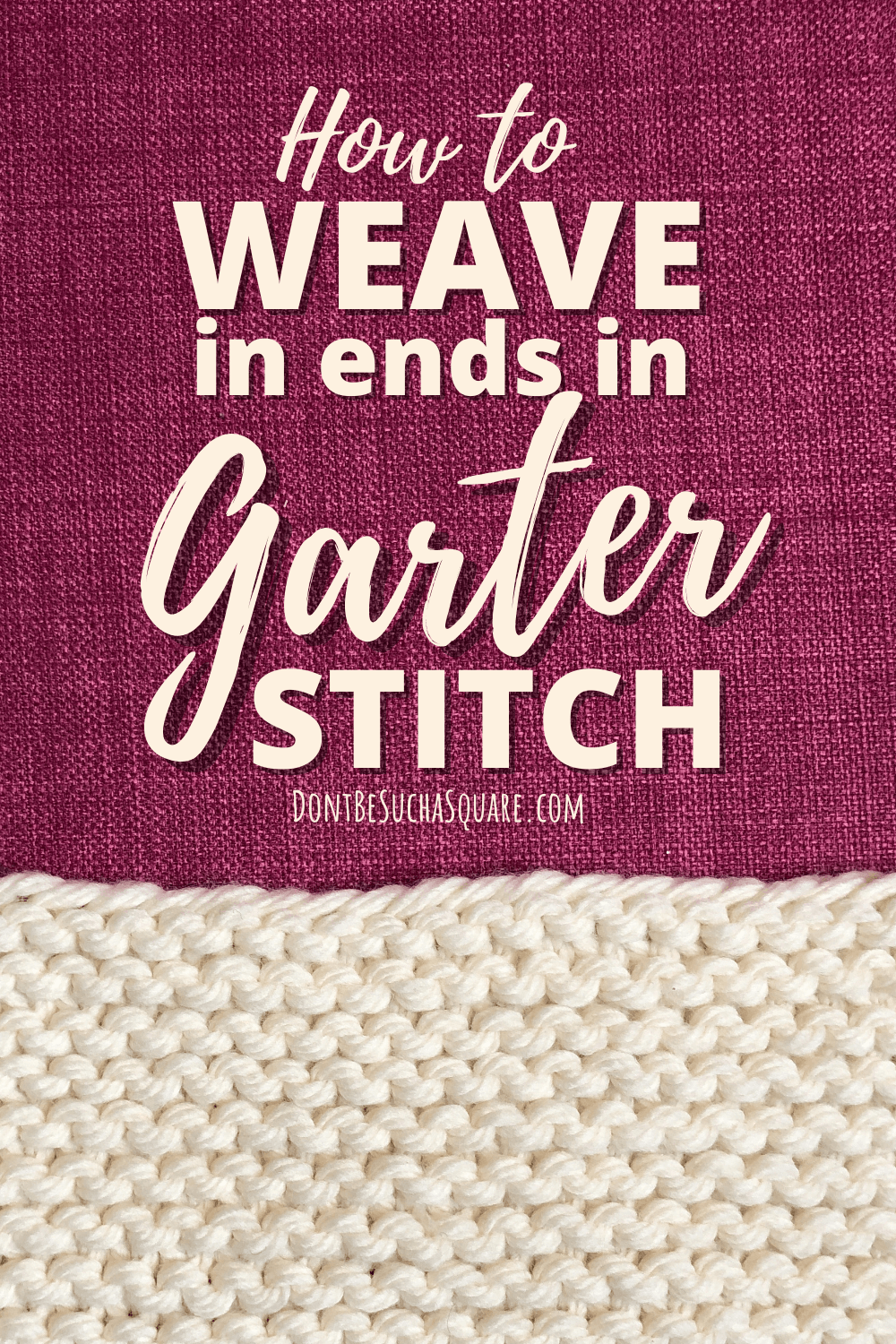Weaving in ends is a necessary part of all knitting projects. Smaller projects might just have one at the cast on edge and one at the bind off. Larger, more complicated projects might have loads of yarn ends to weave in at the end.
Garter stitch projects are no different, there will always be ends to weave in.
There are many ways to weave in ends and we all have our favorite methods and there is no one right way to go about it.
I have seen that many knitting bloggers and YouTubers weave in ends in garter stitch by duplicating the stitches. I have tried this way but I think it’s a bit too time-consuming and it doesn’t always look as neat as I want it to.
So, I’m going to show you how I do it, and then you can use the weaving method that best suits you!

How I weave in ends in garter stitch
When I weave in my ends I want the task to be fast, easy, invisible, and durable. I do it as simply as I can without being sloppy.
For the garter stitch, I just thread the yarn tail to a blunt needle. Next, I stretch the fabric with one hand to reveal the knit stitches hiding between the garter ridges.
With my other hand, I weave under one leg of each knit stitch in a row for seven stitches or so. This is enough for most yarns, but to feel safe I usually turn back and weave in the row under too.
Then I just pull the fabric sideways to make sure the end has a little slack and then cut it off. Easy right? 🙂
Knitting Video: Weaving in ends in garter stitch the easy way
This is how I weave in my ends when knitting garter stitch. If you like the video please give it a thumbs up and subscribe to my youtube channel!
More to read:
––> How to knit garter stitch
––> Garter stitch in the round – without purling!
––> Chinese waves – a pretty looking variation of the garter stitch
Some tips for weaving in ends in general:
- Try to leave your ends at the side of the work. It’s easier to hide the weaving at the edge.
- When leaving the tails at the side you save some time as you don’t need to close the hole that appears when you leave the old yarn and pick up a new one.
- If you’re going to seam your project you can use the ends for seaming. This will save you some of the work with weaving in.
- Don’t pull the end too hard while weaving it in. If you give it a little slack it will be less visible.
- Knitting with slippery yarn? Always weave your tail in two directions to secure it. And remember, it’s no shame to tie a small knit at the back if it makes you feel safe!
- If you dislike the task of weaving in ends, plan ahead. If you knit a few of the first stitches after the cast on with the working yarn and the tail held together you save yourself one end to weave in.
- Likewise, if you knit a few stitches with both the old and the new yarn strand when adding a new ball the ends don’t need weaving in afterward. This may be invisible or very visible depending on the yarn and stitch pattern so you have to try and see.
